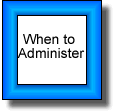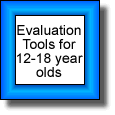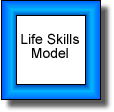 |
|||||||||
 |
|||||||||
 |
|||||||||
 |
|||||||||
 |
|||||||||
Critical Thinking: Teaching Resources
Given this complex world in which youth live in, it is very important that youth learn to think critically. Of course, thinking is a natural part of a human being's interaction with the world, but unless youth are taught to think critically, they may gain a clear understanding of the world around us. Critical thinking is required to navigate the ever-complex environment in which they live.
Critical thinking is defined as thinking that evaluates reasons and brings thought and actions in line with evaluations. Youth may know how to access and locate, interpret, and apply information. However, if they do not invest any time in evaluating the information they use, their efforts often result in a low-quality product. Worse, failure to evaluate may result in unfavorable outcomes when teamed with bad decision-making based on flawed information.
Youth can learn the steps and practice the skills necessary to become critical thinkers. Below are the skills that comprise critical thinking.
- Reasoning. Youth are able to explore the implications of information. They can explain what they think and use given information to predictions and develop hypothesis. Youth can reasons for their opinions.
- Enquiry. Youth can find and collect information from a diversity of sources. They can and do collect information systematically.
- Analysis/Information Processing. Youth can sort, classify, and compare ideas and they can break ideas and problems into parts so to examine them. Youth can identify assumptions that underlie conclusions made by them or others.
- Flexibility. Youth can take what they learn in one situation and transfer it to another situation. Youth become aware that there is no single right or wrong area.
- Evaluation. Youth can and do evaluate credibility of sources. Youth judge the value of what they hear, see, or read through the development of criteria for judging values. Youth look for consistencies and can identify faulty reasoning. Youth can assess the likelihood of a hypothesis.
According to Fisher (1990), critical thinking can be fostered through a method of teaching called 'community of enquiry.' In a typical community of enquiry youth read a story together or conduct a project together. They devise their own questions and then have a discussion guided by a leader.
- Leaders can facilitate critical thinking primarily through asking questions. For example, a leader was beginning a lesson in which the children (7-8 yr. Olds) were to work in pairs. She asked, "How many pairs of children will we have?" The children seemed to have little idea, so the teacher posed another question: "What do we need to know to figure this out?" The suggestion came that they needed to know how many children there were. Instead of simply giving them the number of children, the teacher asked, "how can we find this out?" and had the children discuss solutions to the problem in small groups. A good question should invite children to think, and is open ended, with possibilities and problems. It is also productive, seeking a response.
A good question will generate more questions. Below are some forms that good questions take:
- Questions that focus attention, such as "Do you notice?" or "Have you seen?" These questions open up areas of investigation and lead to more questions that probe reasons, evidence, and assumptions.
- Questions that force comparison help children compare, classify more closely, and bring order to their experiences.
- Questions that invite children to judge and assess things for themselves, such as "How many?" "How often?" etc.
- Questions that seek clarification can help children focus on what they really mean by asking them to consider the words they want to use. For example: "Can you give me an example?" "What do you mean by?" etc.
- Questions that invite inquiry, such as "What to we need to know?" How can we find out?" "What would happen if?"
- Questions that seek reasons, such as "How did you know? "Why do you say that?
Fisher, Robert (1990). Teaching Children To Think. Hemel Hempstead, Herts: Simon and Schuster Education.
Growing Old, Some Physical Problems
Materials:
- Vaseline rub on 2 glasses (cataracts)
- 2 ropes/rags to tie an arm to the body
- 2 big puffy mittens to show arthritis
- 2 noise blockers like crews wear at the airport
- 2 wheelchairs or masking tape to confined someone to a chair
- 2 sets of suckers for someone to suck on and talk.
Purpose: - To have children reason and inquire about what it is like when people who are growing old become physically challenged
Age: - Children ages 8 and up
Group size: - 10 people or more (need supplies for everyone)
Steps:
-
1. Prepare participants for the experience by explaining to them that they will each be assigned a physical challenge and they will experience that physical challenge for approximate 15 minutes.
2. Assign everyone a physical challenge and set them up.
3. Go through some common tasks to do. Plan on about 15 minutes worth of tasks. For example, you may have them lacing shoes, picking up a dropped pencil, reading, writing, eating, playing cards (ANNA add more).
Discussion Questions:1. What did it feel like?
2. Were you treated differently by people?
3. What was the most frustrating task you had to do?
4. What does this mean when we see an older person with a physical challenge?
Hint:This is a great activity to do before visiting a nursing home.
Remember to state:Not all people who grow old have health problems, some of elderly are active and fit. But it is not uncommon for the very old to develop physical challenges.
Build a Toothpick Bridge
Materials: -
boxes of toothpicks
-
bags of gumdrops
-
pictures of big bridges
Purpose: -
To have children design a structure out of only toothpicks and gumdrops that will support a minimum of three pounds. They will work on their reasoning skills as they try out which ideas work best, as well as their problem-solving skills
Age: -
Children ages 8 and up
Group size: -
Have children work in groups of three or four
Estimated time: -
1 hour
Steps:1. Show children pictures of bridges in the real world. Tell them that they are going to build their own bridge out of toothpicks and gumdrops. (10 minutes)
2. Divide the children into groups of five to eight people and give them enough materials to build a bridge. Tell them that the bridge must be able to hold a three-pound weight (e.g., brick or big binder). Have them talk about what they are going to build among themselves before they build it, and come up with a plan. (10 minutes)
3. Have them build the bridge. (25 minutes)
4. Test each bridge to see which ones are strong enough to support a three-pound weight. (5 minutes)
5. Discussion (10 Minutes)
Discussion Questions:1. Look at the pictures of real-world bridges. Why are they strong? How are the bridges you built similar to the ones in the pictures? How are they different?
2. What designs for bridges worked well? What didn't work?
3. What was challenging about this assignment?
Article Analysis
Materials: -
Newspapers
Purpose: -
To have youth analyze the arguments in a newspaper article. Youth will work on their ability to break ideas and problems into parts and analyze them, as well as their ability to understand multiple points of view.
Age: -
Youth ages 14 to 18
Estimated Time: -
45 minutes
Steps:
1. Break the youth into pairs.
2. Have youth to choose an article from the opinion section of the newspaper. ( 5 minutes)
3. After reading it, have the youth write a brief description of what the article is trying to convince the reader of. (10 minutes)
4. Have youth develop a bumper sticker that gets the message of the newspaper article across. (10 minutes)
5. Have youth present their bumper sticker. (10 minutes)
6. Discussion (10 minutes)
Discussion Questions:What argument is the article making?
What strategies does the author use to convince you that his/her point of view is right?
3. What would someone who disagreed with the author of the article say in response to the author's argument?
Internet Search
Materials: -
Computers with Internet access
Purpose: -
To have the youth conduct research and evaluate the reliability of the information they find. Youth will work on their ability to seek out information on a relevant topic, as well as their ability to evaluate the worth/reliability of the information they find.
Age: -
Youth ages 14 to 18
Estimated Time: -
45 minutes
Steps:1. Have the youth pick a topic that interests them--space travel, racing cars, horses--anything they choose--and conduct a search on the internet for information on their topic. (15 minutes)
2. Have youth present three sources of information they find on the topic and evaluate whether the sources they found were reliable. (20 minutes)
3. Discussion (10 minutes)
Discussion Questions:1. Do you believe the information presented in the source? Why? Why not?
2. Where did the information come from?
3. What kind of research did the authors do to get the information?
Advertisement Analysis
Materials: -
Magazines, Newspapers
Purpose: -
To have the youth analyze the persuasive techniques used in the advertisements that appear on TV, the radio, and in magazines. Youth will work on their ability to analyze an argument.
Age: -
Youth ages 14 to 18
Estimated Time: -
40 minutes
Steps:
1. Have the youth get into groups of two. They are to pick out an advertisement from a magazine or newspaper. (10 minutes)
2. Ask them to analyze what the ad is trying to convince the viewer to buy/do and describe what techniques the ad uses. Have them present their analysis to the large group (20 minutes)
3. Discussion (10 minutes)
Discussion Questions:1. What is the ad trying to persuade you to do?
2. How does it go about trying to persuade you?
3. If there are people shown in the ad, why do you think the advertisers chose the models they did for the ad?
4. Does the ad make you want to try the product advertised? Why? Why not?
Storybook Discipline*
Materials: -
None needed
Purpose: -
To have youth explore appropriate consequences by making up an ending for an open-ended story. Youth will work on their judgement skills and their ability to foresee consequences to their actions.
Age: -
Youth ages 14 to 18
Estimated Time: -
20 minutes
Steps:
1. Form teams of about four youth. Explain that you're going to begin a story and that each team is to discuss how the story could end. Start with something like: "Once upon a time, there was a teenager who threw a rock through his parents' window. When the parents found out, they were furious. They decided the best and most fair way to punish their teenager was to. . ."
2. Stop the story there, and give the youth time to discuss possible endings. Have each group present their endings to the story. (10 minutes)
3. Discussion (10 minutes)
Discussion questions:1. How would the ending of your story have been different if:
" The teenager was 13? 19?
" The teenager was female? Male?
" The teenager had never done anything like this before? Did destructive things every day?
" The teenager explained that he or she was hurt and trying to get help?2. Does knowing more facts change the way you think about consequences?
3. How often do you talk with your parents before consequences are set?
4. When you talk, how does it affect the consequences?
* This activity was adapted from Roehlkepartain, J. L. (1999). Building Assets Together: 101 Group Activities for Helping Youth Succeed. Minneapolis, MN: Search Institute.
Homework Centers*
Materials: -
Paper, colored pencils, markers, or crayons
Purpose: -
To have youth imagine and design an ideal study hall. Youth will work on their ability to solve problems, as well as their ability to think about the way they learn and think.
Age: -
All ages
Estimated Time: -
40 minutes
Steps:
1. Ask youth to form teams of threes. Give each threesome a piece of flipchart paper and some markers.
2. Ask the youth to draw what an ideal study hall would look like. Encourage them to be very detailed. (20 minutes)
3. After the youth finish, have them present their pictures to the rest of the group and explain why they included the items that they did in their ideal study hall. (10 minutes)
4. Discussion (10 minutes)
Discussion questions:1. What are things you identified that make homework productive? What interferes?
2. How many of the things you included are available to you right now?
3. What could you do to make your homework time more productive?
* This activity was adapted from Roehlkepartain, J. L. (1999). Building Assets Together: 101 Group Activities for Helping Youth Succeed. Minneapolis, MN: Search Institute.
